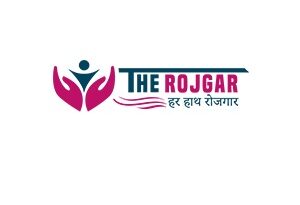Achieving ISO 27001 Certification: Safeguard Your Business with Top-Notch Information Security
In an era where data breaches and cyber-attacks are on the rise, businesses must prioritize protecting their information assets. The stakes are high, with sensitive customer data, intellectual property, and confidential business information constantly at risk. One of the most effective ways to secure this information and demonstrate your commitment to cybersecurity is by achieving ISO 27001 certification.
ISO 27001 is the internationally recognized standard for Information Security Management Systems (ISMS). It helps organizations systematically manage sensitive information, ensuring its confidentiality, integrity, and availability. In this article, we’ll explore what ISO 27001 certification entails, its benefits, and how your business can achieve and maintain this crucial certification.
What is ISO 27001?
ISO 27001 is a global standard for establishing, implementing, maintaining, and continually improving an Information Security Management System (ISMS). The ISMS framework enables businesses to manage security risks in a structured manner, ensuring that information remains secure and protected against unauthorized access, disclosure, or loss.
The standard is built on the following key principles:
- Confidentiality: Ensuring that information is accessible only to those authorized to access it.
- Integrity: Safeguarding the accuracy and completeness of information and processing methods.
- Availability: Ensuring that authorized users have access to information and associated assets when required.
ISO 27001 is designed to be flexible and applicable to businesses of all sizes and industries, allowing them to tailor their information security measures according to specific business needs.
Key Benefits of ISO 27001 Certification
Achieving ISO 27001 certification offers several key advantages, strengthening a business’s information security posture and providing broader organizational benefits. Here’s how this certification can add value to your company:
- Enhanced Data Protection
ISO 27001 provides a framework for identifying, assessing, and addressing potential risks to sensitive data. This ensures that organizations have the necessary safeguards in place to protect against data breaches, cyber-attacks, and other security threats.
- Compliance with Legal and Regulatory Requirements
The standard helps businesses meet increasingly stringent regulatory requirements related to data privacy and information security, such as GDPR, HIPAA, and other sector-specific regulations. Achieving ISO 27001 certification demonstrates compliance and reduces the risk of fines, penalties, and reputational damage.
- Improved Customer Trust and Confidence
In today’s digital landscape, customers are more aware than ever of data security issues. ISO 27001 certification reassures clients, partners, and stakeholders that your business prioritizes the protection of their sensitive information, enhancing your reputation and fostering trust.
- Competitive Advantage
For businesses seeking to win new contracts or enter new markets, ISO 27001 certification can be a valuable differentiator. Many organizations, especially in sectors like finance, healthcare, and technology, require suppliers to be ISO 27001 certified, giving certified companies a competitive edge.
- Reduced Risk of Data Breaches
ISO 27001 helps identify potential security vulnerabilities and implements measures to mitigate those risks. By systematically managing threats, businesses can reduce the likelihood of costly data breaches, which could otherwise lead to legal liabilities and loss of business.
- Operational Efficiency
The standard encourages a culture of security awareness and discipline within the organization, leading to better internal controls and structured processes. This results in more efficient information handling and a more resilient business model.
- Employee Engagement and Accountability
ISO 27001 promotes a security-conscious culture where employees are actively engaged in information security practices. By providing clear guidelines and responsibilities, the certification fosters accountability and helps employees better understand their roles in maintaining security.
Steps to Achieving ISO 27001 Certification
Achieving ISO 27001 certification involves a well-defined process that includes setting up an Information Security Management System (ISMS) and ensuring its ongoing maintenance and improvement. Below are the steps your organization can take to achieve ISO 27001 certification:
- Perform a Gap Analysis
Before embarking on the certification journey, a gap analysis is essential to assess your current information security practices against ISO 27001 requirements. This will highlight areas that need improvement, whether in data encryption, access controls, or incident response procedures.
- Secure Management Commitment
ISO 27001 requires strong support from top management. Leadership must allocate the necessary resources and demonstrate a commitment to information security. This ensures that the ISMS is aligned with business objectives and receives the attention it deserves at all levels of the organization.
- Define the Scope of the ISMS
The next step is to define the scope of your ISMS, which identifies the boundaries of your system. The scope may include specific business units, locations, or the entire organization. It’s crucial to set a clear scope based on your company’s information security needs and the assets you aim to protect.
- Conduct a Risk Assessment
One of the central components of ISO 27001 is performing a risk assessment. This involves identifying potential threats to your information assets, evaluating the likelihood of these threats, and assessing their impact. This process helps organizations understand their risk exposure and prioritize mitigation efforts.
- Develop a Risk Treatment Plan
Once risks have been identified and assessed, a risk treatment plan must be developed. This plan outlines the actions your organization will take to mitigate or eliminate risks. These measures may include implementing firewalls, encrypting sensitive data, improving access controls, or adopting stronger password policies.
- Create an Information Security Policy
Your information security policy is a high-level document that outlines your organization’s commitment to safeguarding information. This policy should cover your overall security strategy, including how risks will be managed, and it should be communicated to all employees.
- Establish Controls and Implement Procedures
ISO 27001 requires businesses to establish and implement specific controls to address identified risks. These controls can range from technical measures like installing anti-malware software to organizational practices like regular employee training on data security.
- Conduct Regular Monitoring and Internal Audits
Regular monitoring and internal audits are essential for ensuring that the ISMS is functioning as intended. Audits help identify weaknesses or areas of non-compliance, allowing businesses to take corrective actions before they lead to security incidents.
- Conduct a Management Review
Before applying for ISO 27001 certification, management should review the ISMS to ensure that it remains effective and aligned with business objectives. This review evaluates the performance of the ISMS, assesses ongoing risks, and identifies areas for continual improvement.
- External Audit and Certification
Once your ISMS is fully implemented and operational, the next step is to schedule an external audit with an accredited certification body. The audit will assess your ISMS against the ISO 27001 standard to ensure compliance. If the audit is successful, your organization will be awarded ISO 27001 certification.
Challenges in Achieving ISO 27001 Certification
While ISO 27001 certification offers numerous benefits, the journey to certification can present several challenges. Understanding these challenges and addressing them proactively is essential for a smooth certification process.
- Initial Costs and Resources
Achieving ISO 27001 certification may require significant investment in terms of time, resources, and personnel. Depending on your organization’s size and complexity, costs may include hiring external consultants, upgrading security infrastructure, and training employees.
- Change Management
Implementing an ISMS may require changes in processes and workflows. Employees may resist these changes or struggle to adapt to new security procedures. It’s important to involve employees in the process from the beginning, offer training, and clearly communicate the reasons behind the changes.
- Ongoing Maintenance
ISO 27001 is not a one-time effort. Certification requires continuous maintenance, including regular audits, risk assessments, and updates to security controls. Businesses must dedicate resources to maintaining the ISMS and ensuring that it remains effective over time.
Maintaining ISO 27001 Certification
Achieving ISO 27001 certification is not the end of the process—maintaining certification requires ongoing effort. Organizations must regularly review and update their ISMS to adapt to changing security threats, business needs, and regulatory requirements.
- Conduct Regular Audits
Certified organizations must undergo periodic surveillance audits by the certification body to ensure ongoing compliance. These audits provide an opportunity to identify areas for improvement and ensure that the ISMS remains aligned with ISO 27001 standards.
- Continual Improvement
ISO 27001 emphasizes the importance of continual improvement. Businesses should regularly review their security measures, assess new risks, and update their ISMS to ensure that it remains robust and effective. This proactive approach helps organizations stay ahead of emerging security threats.
Conclusion
Achieving ISO 27001 certification is a powerful way to safeguard your business against information security risks and demonstrate your commitment to protecting sensitive data. The certification process involves a structured approach to identifying, assessing, and mitigating security risks, ensuring that your organization remains resilient in the face of evolving threats.
While the path to certification may require significant effort and investment, the long-term benefits—such as enhanced data protection, legal compliance, improved customer trust, and a competitive edge—make it a crucial step for businesses in today’s digital world. By implementing and maintaining an ISO 27001-certified ISMS, your organization can safeguard its assets, minimize the risk of costly data breaches, and build a strong foundation for future growth and success.




